Carrots are a vegetable crop that grows better in a raised bed than in any other growing medium. However, these sweet, crunchy vegetables will become tricky to grow if you don’t know how to space them properly.
If you are planning to grow carrots in your raised bed, read this article for detailed information about the crop’s spacing requirements.
When you sow carrot seeds in the raised bed, space them 1 inch apart, and when the seeds germinate and form seedlings, thin them to 3 inches apart. If you plant carrots in rows, you don’t need to leave space between rows. However, if you have a wide raised bed, space the rows 3 inches apart.
If you are unsure how far apart you should space carrot plants in a raised bed, this article is for you. This article will also provide details regarding the depth of the raised bed and the mistakes to avoid while growing carrots.
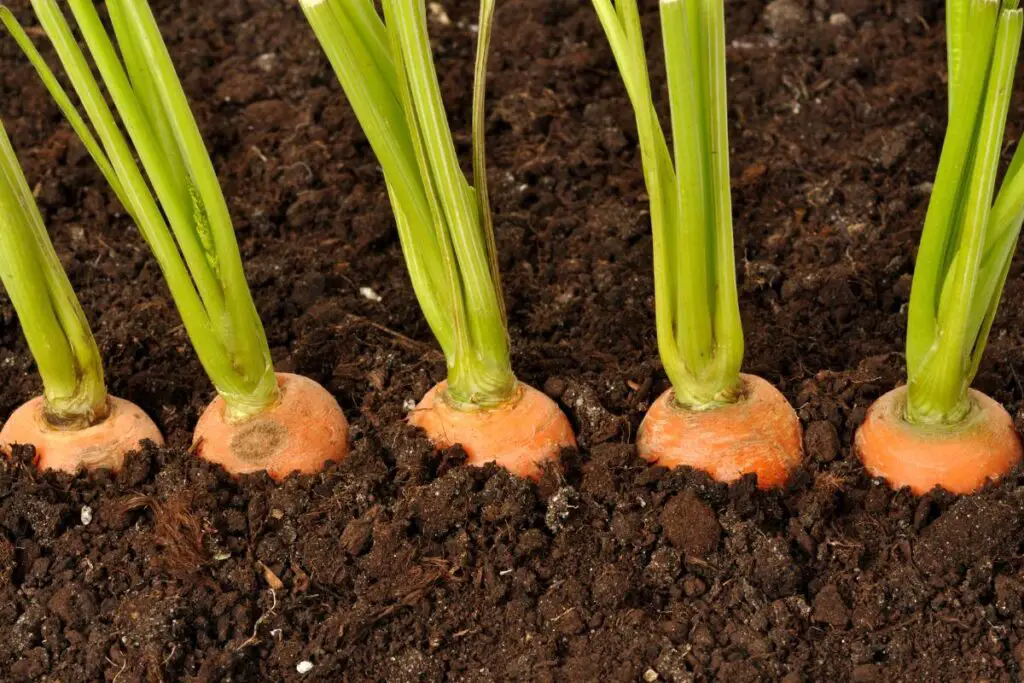
Are raised bed good for carrot plantations?
A raised bed is one of the best ways to grow healthy carrot crops. The raised bed helps the carrots in many ways.
It gives the crops the perfect soil condition and helps them reach their full potential.
The crumbly, deep, loose soil and compost help the carrots grow straight and form thick roots with beautiful color and a sweet crunch.
Carrots are root vegetable, so it requires deep moisture to develop strong and thick roots.
Therefore, a raised bed soil will provide the carrots with good drainage, preventing the problem of overwatering.
Why is spacing important for carrot plants?
Spacing is a vital factor for the success of any vegetable crop.
Many people don’t get bothered about the spacing requirements of their crops and get a poor yield after harvesting.
For a plant like a carrot that takes a very little space, they will only handle competition well if you space them properly.
Carrots like thriving in fertile soil; nutrients become a limiting factor when closely spaced.
The carrot plants will start fighting for nutrients; only a few will come as winners, and others will suffer.
Therefore, you will need to fertilize the soil more frequently to boost the plant’s growth.
On the other hand, proper distance between plants will help to maximize their yields.
The plants will get adequate resources like air, water, and nutrients in sufficient amounts, and there will be a very thin margin of error.
Harvesting will also become easier if the plants are spaced correctly.
The carrots usually have slow growth and delicate early stages, so if they are well-spaced, they will not get disturbed by any damage in the soil.
Spacing is one way to give the carrots plant what it needs to thrive at its full potential.
How can I space carrot plants evenly in my raised bed?
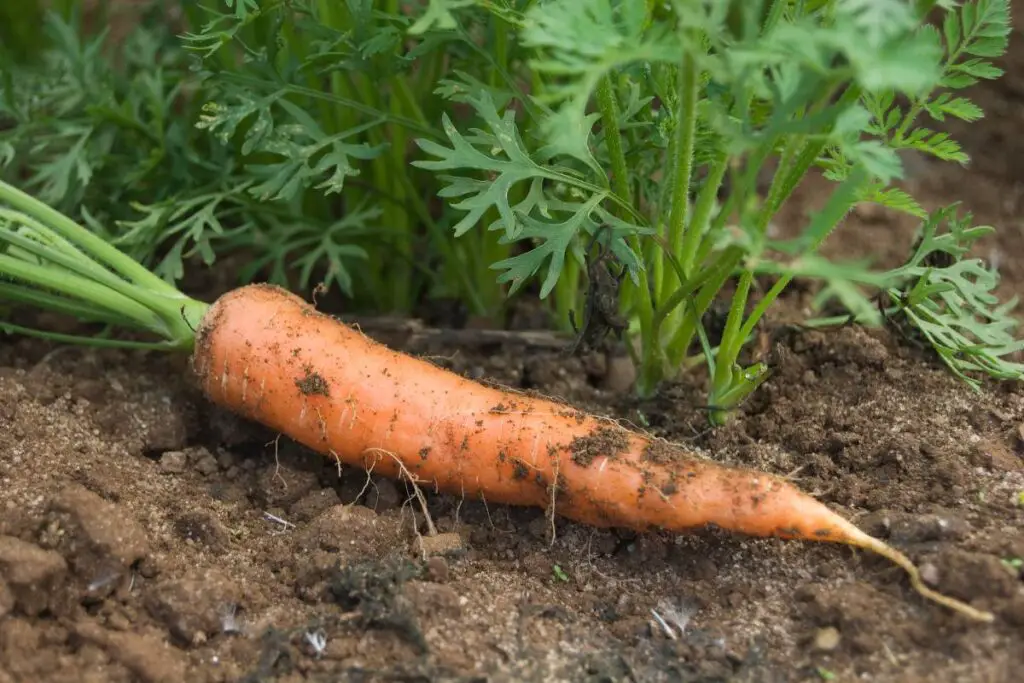
Carrot seeds are tiny, so it is challenging to space the plants evenly in a raised garden. However, you can follow some options for spacing carrots plants:
- Seed tapes: The tapes come with pre-spaced seeds attached to the tape with a strip of biodegradable paper.
- Pelleted seeds: The seeds are wrapped with an inert, organic material. This material helps in making your carrot seeds large enough so that you can space them evenly.
What carrot varieties should I grow in my raised bed?
You can grow different varieties of carrots in a raised bed garden. The most popular varieties are:
- Trevor
- Parmex
- Mokum
- Adelaide
You can also select a main crop variety of carrots called Berlicum if you want to store carrots for a longer period.
But such varieties require a deeper layer of soil due to their extra-long growth.
Looking for gardening supplies? We have tested 100's of products before recommending them to you guys. Check out our best pick below:
| Image | Gardening Supplies | Best Price? |
|---|---|---|
 Top
Top Top
Top | Raised Garden Bed Kit | Check On Amazon |
 | XLUX Soil Moisture Meter, Plant Water Monitor, Soil Hygrometer Sensor for Gardening, Farming, Indoor and Outdoor Plants, No Batteries Required | No Results |
 Top
Top Top
Top | 82 Pcs Garden Tools Set and Extra Succulent Tools Set | Check On Amazon |
 | Joeys Garden Expandable Garden Hose with 8 Function Hose Nozzle, Lightweight Anti-Kink Flexible Garden Hoses, Extra Strength Fabric with Double Latex Core, (50 FT, Black) | No Results |
 Top
Top Top
Top | Dual Chamber Compost Tumbler | Check On Amazon |
 Top
Top Top
Top | Sunnyglade Plant Stakes | Check On Amazon |
 Top
Top Top
Top | Organic Cold Pressed Neem Seed Oil | Check On Amazon |
 Top
Top Top
Top | Mighty Mint Gallon :-Insect and Pest Control Peppermint Oil | Check On Amazon |
 Top
Top Top
Top | Scotts DiseaseEx Lawn Fungicide | Check On Amazon |
 Top
Top Top
Top | Jacks Classic 20-20-20 All Purpose Fertilizer | Check On Amazon |
 Top
Top Top
Top | 30,000 Seeds Pollinator Attracting Wildflower Mixture | Check On Amazon |
 Top
Top Top
Top | Survival Vegetable Seeds Garden Kit-Over 16,000 Seeds | Check On Amazon |
How much space and depth do carrot plants needs for growing?
The carrot plants need a depth of 15-18 inches to grow and thrive.
The carrot’s roots will grow between 2-12 inches long.
This crop grows under the soil, so they need a deeper raised bed.
However, if you are growing taller varieties, you will need a soil depth of 16 inches.
On average, the carrot plants should be spaced 3 inches apart.
The carrots will be 0.5-1.5 inches wide while harvesting.
To achieve a successful harvest, you must ensure that the soil is free from rocks, dirt, roots, etc.
Such obstructions can restrict the carrots growing space and cause them to grow deformed.
How should I space my carrot seeds?
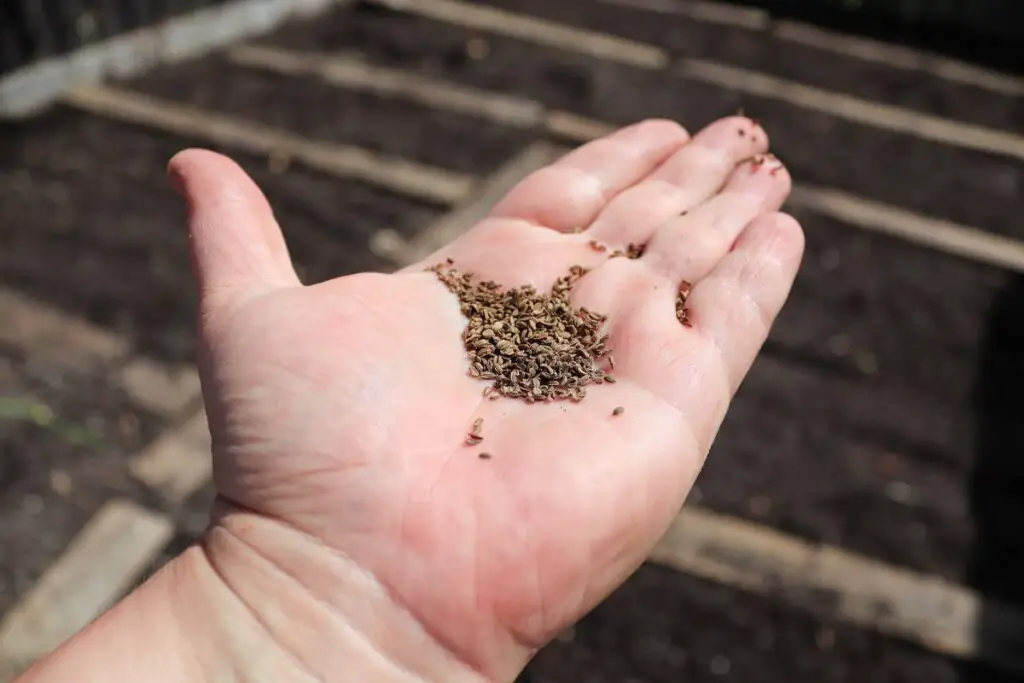
When you plant carrot seeds in a raised bed, you should leave 1 inch of space between the seeds.
After spacing them, you will need to cover the seeds with a thin layer of soil which should be 0.25 inches thick.
Remember, carrots seeds are very delicate to be transplanted, so it’s not possible to start them indoors, so it’s always better to sow them directly in the ground.
After sowing the seeds, you need to wait until they germinate before you thin them out.
How should I space my carrot plants?
Once the carrots germinate and grow for a while, it’s time to thin them.
Thinning will not harm the plants.
Instead, it will bring the strongest carrots discarding the weaker ones.
It would be best to thin the seedlings once they become 3-4 inches tall.
Start thinning the carrot plants and space them 3 inches apart by pulling out the smaller ones.
As your carrots grow, you must water them enough to keep the soil moist.
They can grow up to 12 inches deep, so deep watering will help them to grow throughout the warm temperatures.
How should I space the rows of my raised bed?
When you plant carrots in a raised bed, you will only require to leave a little space between the rows.
It is because raised beds are small, and whatever your plants demand, you can provide them from the outside.
But if you have a wide raised bed, you will need to space the rows 3 inches apart.
This distance will give enough space to walk between the rows. Also, it will become much easier to remove weeds, fertilize the plants, inspect for pests and diseases and harvest the carrots.
What is the ideal depth of a raised bed for carrot plants?
The raised bed should be 18 inches deep for growing carrots.
The depth is divided into two parts. Let us know the reason why.
- Bottom 15 inches: This is the space for the soil where carrots grow up to 12 inches long. You can keep the extra 3 inches of soil if your carrot grows longer than the expected size.
- Top 3 inches: This involves the spacing for extra material during the growing season. This extra space becomes useful if you want to add fertilizers to the bed or a layer of mulch.
The extra space will not let the soil spill out from the raised bed.
If the soil is filled up to the top, it will easily get removed by wind or heavy rainfall.
Therefore, the extra depth will help you to deal with such issues.
How many carrots a raised bed can hold?
In your raised bed garden, for every 1 foot or 12 inches of length, you can plant 4 carrots in a row if you maintain 3 inches gap between each plant.
If you have a foot-long raised bed, you can plant 16 carrots in a row.
If the raised bed width is 2 feet, then you can make 8 rows of carrot plants.
Hence, in a 4-foot raised bed, you will get 18 carrots.
What mistakes should I avoid while growing carrots in a raised bed?
Carrots are tricky to grow; hence, many people make common mistakes.
Below I have discussed the common mistakes people make while growing carrots in a raised bed.
1. Using inappropriate soil
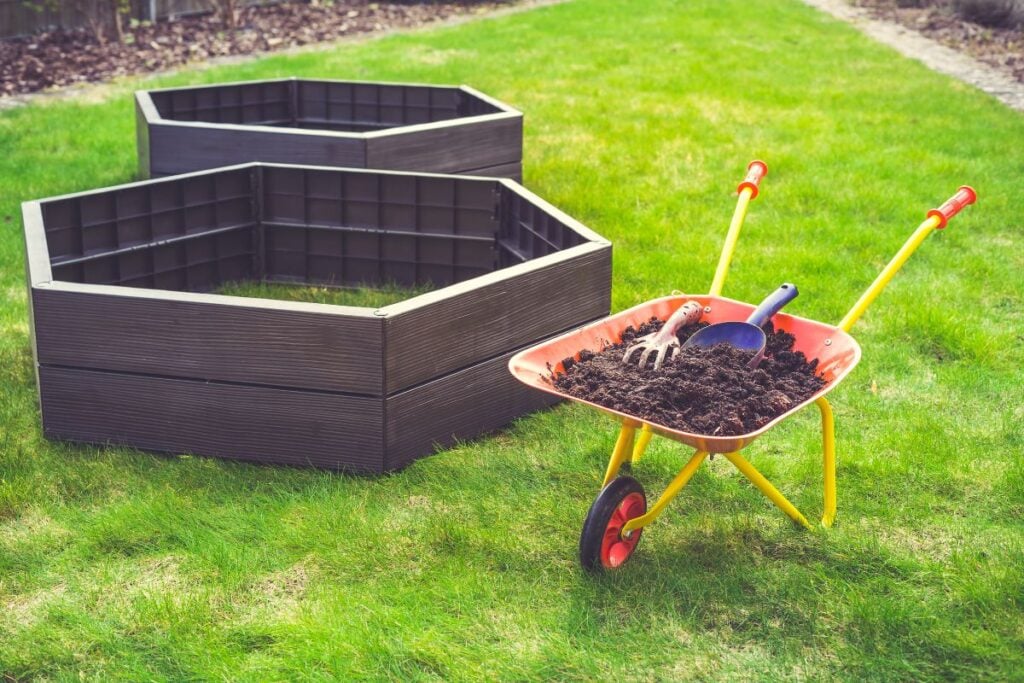
Soil is considered the most important priority when it comes to raising carrots.
If you prepare a raised bed with the wrong soil composition, your plants will fail to thrive.
The soil for carrots should be loose and airy.
Loose soil is the key to growing healthy and tasty carrots.
Fill your raised bed with 12 inches of fine loose soil.
Make sure the soil has no rock particles, as it will obstruct the carrot’s growth by preventing it from growing straight.
The rocks and clumps will change the shape of the carrots.
Also, be sure the soil should be well drained so that the excess water will drain easily from the carrots, preventing them from rotting.
You can also add a few coffee grounds to improve the quality of the soil.
Also read: 7 Best DIY Raised Bed Soil Mix: A Step-by-step Guide
2. Not spacing the plants correctly
Spacing is considered the most important factor while growing carrots in a raised bed.
If you plant the carrots too closely, they will not grow to their full size.
They will compete for nutrients in a small space, resulting in deformed carrots.
Therefore, proper spacing between carrots plants is necessary.
The carrot seeds are tiny, so ideally, it’s impossible to space them in a raised bed.
Once the seeds germinate and forms seedlings, start thinning them and space them 3 inches apart in your raised bed.
3. Pulling the carrots from the ground
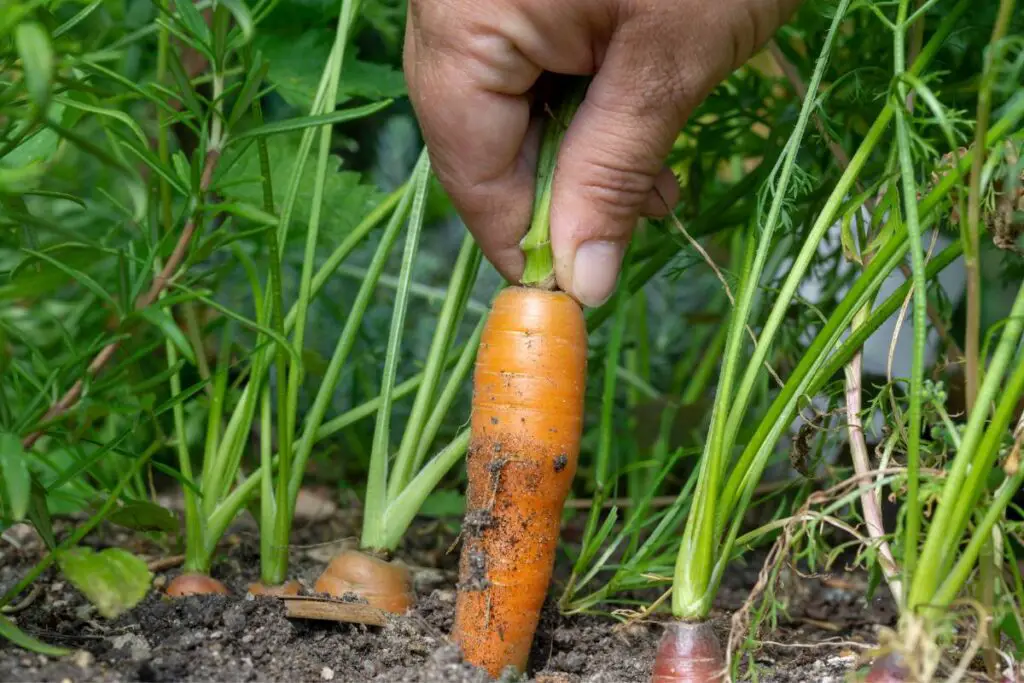
This mistake is similar to the previous mistake.
After our carrot seeds had germinated, we began thinning them out.
During this process, we might remove the sprouts in a wrong way that harms the remaining plants.
We shouldn’t pull the sprouts directly from the bed when we remove them.
Since the roots of carrot plants are linked, pulling will disturb the other carrot plants.
To avoid this mistake, you can use scissors to snip the unwanted sprouts from the soil.
4. Using the wrong methods of watering
The carrots plants have different watering needs depending on their growth stages.
Understanding how to correctly water plants during their germination and once they sprout is vital to their success.
Practicing the wrong watering methods will result in disappointing results.
Carrots prefer to grow in moist soil, so you must water the plant a little daily.
If you have recently planted carrot seeds, start watering them lightly for two weeks daily.
Watering will help the seeds break their protective cover and prepare for germination.
Once the seeds sprout and the carrots start growing, follow a deep watering method.
5. Not feeding the carrots correctly
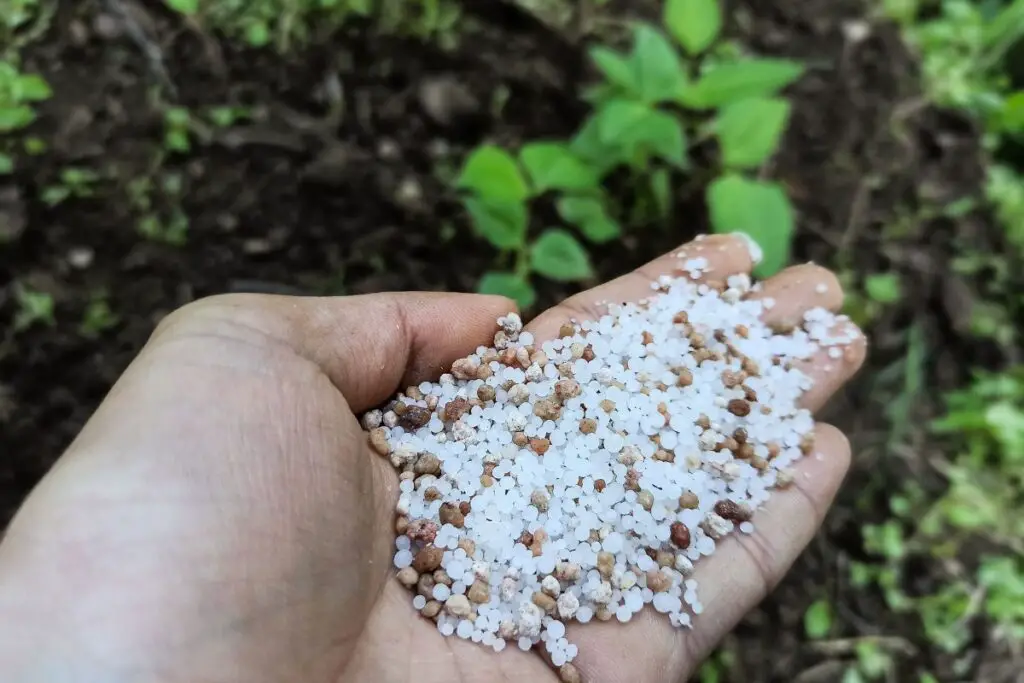
Many think adding more fertilizers will lead to bigger, tastier carrots; however, it’s not true.
Carrots don’t need nutrients in the same way as other plants do.
While fertilizing the crops, you won’t be able to see the impact of fertilizers on carrots until you harvest them.
However, fertilizing carrots is completely fine.
You should amend the raised bed before planting the seeds and fertilize once every month throughout their growing season.
Select a fertilizer for carrots that is higher in phosphorous and lower in nitrogen.
Nitrogen will boost the leaves’ growth, whereas phosphorous emphasizes the development of the root.
6. Transplanting carrots
Many people like to start seeds at home and transplant the seedling when the temperature becomes suitable for planting outside.
However, carrots can’t be grown in the same manner.
One good thing is that carrots are hardy and thrive in cold temperatures.
Carrots do not like to get transplanted once the seeds have germinated and have formed roots.
So, it’s better to sow the seeds directly in the raised bed.
Carrots are roots crop and will not get affected by the cooler temperatures.
So, you can plant them in the ground without any worries.
It is known that frost makes carrots sweeter and more delicious.
7. Not mulching the raised bed
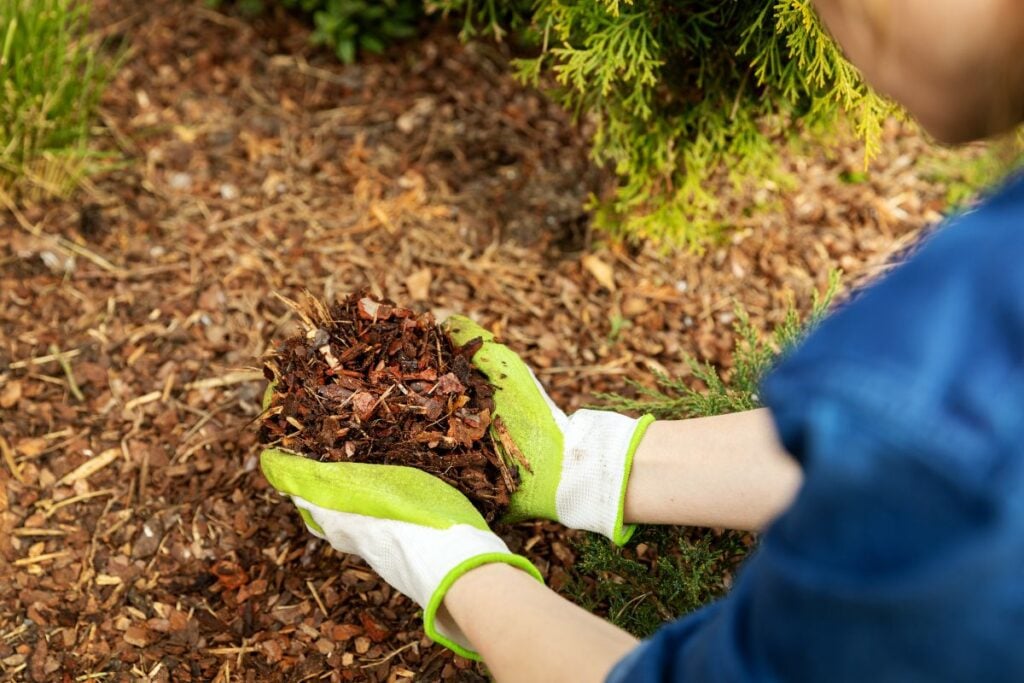
Mulching is an effective way to prevent weeds from growing in the raised bed.
Weeds will cause the carrots to grow undersized, low quality, and poorly shaped.
Therefore, it’s necessary to prevent weed growth.
Also, mulching will retain moisture for the plants.
After germinating, you can mulch the carrots with a thick layer of organic material.
Mulching the carrots before they germinate will lead to poor germination.
Reference: ScienceDirect, American Society of Agronomy, Noble Research Institute, Soil for Raised Beds, Raised Bed Gardening, Carrot yield in the raised garden beds.
